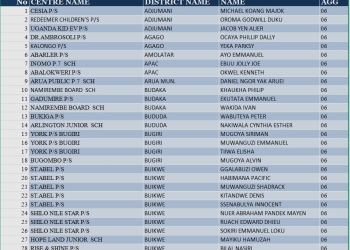Across the world, a silent but deliberate actor is influencing the course of various ongoing military conflicts. From Southeast Asia to Eastern Europe, and from Africa to the Middle East, China has begun to play a pivotal role in shaping how wars unfold and how power is distributed in regional conflicts. Although Beijing continues to speak the language of peace and non-interference, its actions suggest a far more interventionist and calculated strategy. Through covert support, economic leverage, technological dominance and strategic diplomacy, China is increasingly determining the tempo and outcome of conflicts without ever taking centre stage.
Unlike conventional great powers that relied on overt military campaigns, China has developed a model based on indirect influence. It has consistently used resource extraction, arms sales, infrastructure projects and digital tools to create dependency in conflict zones. In Myanmar, for instance, the civil war has not stopped Chinese investments. Rather, Beijing has maintained ties with both the military junta and rebel factions elevating its regional position far greatly than before. Recent reports confirmed that Chinese-backed militias have taken control of rare-earth mines in Shan State. These are essential for global electronics, and Beijing now enjoys a near-monopoly by securing them during periods of chaos.
A similar strategy is visible in Sudan too. Despite international arms embargoes, Chinese weapons have reached warring militias in the region creating an environment of further escalation in conflict. In 2024, Amnesty International traced drones and small arms used in the conflict to Chinese manufacturers. In Ukraine, China has avoided direct alignment with Russia but continues to provide dual-use technologies. Up to 80 percent of Russia’s wartime imports, including missile components, are believed to be sourced from Chinese firms, many of which operate in legal grey zones.
This pattern reveals a clear strategic intent. China does not seek open confrontation, yet continues to work behind the scenes, ensuring that whichever faction wins, Beijing retains access and leverage.
Maritime Expansion and the Use of Infrastructure as a Tool of Power
China’s activities at sea too offer a clearer picture of its grey-zone tactics. In the South China Sea, Chinese vessels have repeatedly harassed Southeast Asian ships using unmarked maritime militias. These civilian-looking fleets, often backed by state subsidies and coordination, operate in contested waters to enforce China’s expansive territorial claims. By deploying these ‘fishermen’ alongside coast guard and naval forces, Beijing has gradually established control without triggering conventional warfare.
In parallel, Beijing has expanded its reach through a massive network of overseas infrastructure. The Belt and Road Initiative has enabled Chinese companies to operate more than 90 ports in over 50 countries. These ports are often described as commercial hubs, but their strategic value is significant. In locations such as Gwadar in Pakistan and Hambantota in Sri Lanka, the potential for dual-use, both civilian and military, is evident. Satellite imagery and procurement contracts suggest many of these projects include space for logistics, command, and surveillance operations.
Within China’s borders, preparations are equally intense. A large-scale underground military command centre near Beijing, revealed in recent satellite imagery, indicates a shift in defence planning. This new facility, reportedly one of the most advanced of its kind, reflects China’s intention to prepare for global conflict scenarios rather than just domestic defence.
Diplomacy, Coercion and the Mask of Mediation
Beijing often presents its diplomacy as principled and peace-oriented, positioning itself as a neutral mediator in conflicts such as Iran-Saudi Arabia, Israel-Palestine, and the Myanmar peace process. While these efforts may appear constructive at first glance, a closer examination reveals that China’s primary objective is not meaningful conflict resolution. Rather, its diplomatic engagement is frequently aimed at safeguarding its own strategic interests, particularly the stability of its investments and trade routes.
Africa too offers a telling example. China is now the second-largest arms supplier to the continent. In many fragile states, it has also deployed private security contractors to protect infrastructure projects and mining concessions. These companies are not accountable to local governments and often function in legal ambiguity. Their presence introduces a layer of foreign-controlled force in already unstable environments.
In addition to security interventions, China has frequently used economic tools to punish or pressure states. Countries that challenge Beijing’s positions, such as Lithuania, Australia and the Philippines, have faced trade restrictions, suspended exports, and withdrawal of tourism flows. China’s control over rare-earth exports and its dominance in green technologies has also allowed it to exert leverage in increasingly strategic ways.
This fusion of diplomatic language and coercive tactics serves a broader political purpose. China is continuously seeking to shape the global order in a way that protects its model of governance, limits criticism of its internal policies, and allows it to expand its influence without direct confrontation.
A Quietly Engineered Global Order
Thus, the picture that emerges is one of calculated intervention. China is not simply reacting to instability around the world. It is actively shaping the architecture of modern conflict. Through selective arms sales, strategic infrastructure, shadow diplomacy, and the use of economic pressure, Beijing is creating a world where power flows through its corridors, even when it avoids the battlefield.
What makes this approach particularly effective is its deniability. It has enabled it to avoid headlines by avoiding tanks and troops. But the outcome has remained clear. Conflicts are prolonged, ceasefires are brokered on Beijing’s terms, and dependency on Chinese markets, technologies, and security forces continues to grow.
This is not a return to Cold War-style blocs, nor is it a version of Pax Americana. What China is building is a subtler and more entangled form of power, one that disguises itself as economic partnership and diplomatic balance, but in practice is reshaping sovereignty, dividing opposition and cementing long term influence.
As the world confronts crises across multiple regions, the question is not whether China is involved or not. The real question is whether the global community recognises the depth of that involvement and whether it is prepared to counter it.




















